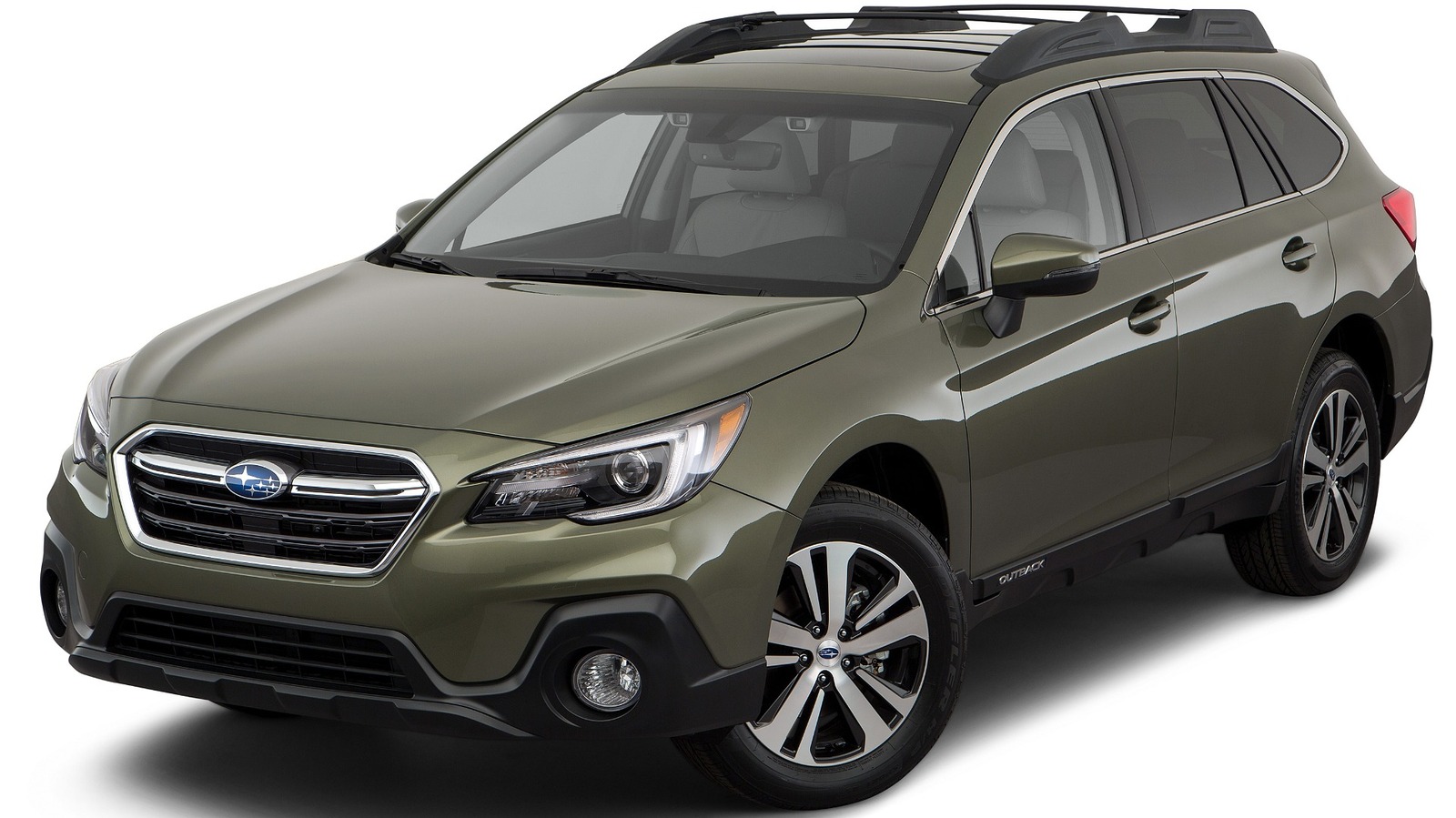Known for its all-wheel drive technology, and models with lengthy lifespans, Subaru offers a distinct experience from its rivals. One of the keys to the automaker’s success, has been the long-running Outback, which first appeared in the mid-’90s as a trim option for the Legacy L wagon. But, as the Outback’s popularity grew, it quickly became its own stand-alone model, and continues to be successful today, with 168,771 units sold in 2024. We had some first-hand experience recently with the 2024 Subaru Outback Touring XT, and loved the addition of turbocharging, but the driver assistance technology was a bit intrusive.
Advertisement
However, despite Subaru boasting that 96% of their vehicles purchased in the last decade are still going strong, there are a few iterations of the Outback you may want to skip. Over the years, many owners have voiced similar grievances about certain production years of the mid-size SUV, that include electrical issues, fragile windshields, and even steering difficulty. The most problematic years in terms of owner complaints are 2015, 2017, and 2018, per CarComplaints.com. However, don’t let these dark spots in an otherwise well received history dissuade you from the automaker. But, for those considering this unique vehicle, there are several things to know before buying a Subaru Outback (new or used).
Advertisement
The 2015 Subaru Outback: dead batteries
Without a properly charged and functioning battery under the hood, the starter can’t receive that vital boost of energy needed to bring life to a cold engine. While the average automobile battery lasts between three and five years, dependent on several factors, starting in 2015, Outback owners reported failures occurring much more frequently. While there are several reasons your car battery keeps dying, the experiences reported by owners of Subaru’s iconic model were certainly outside of the norm.
Advertisement
One driver relayed their horror story, which involved the battery going dead seven times within the span of a few years. Another owner described their frustration after parking the vehicle at the airport for five days on two separate occasions, only to return and find the battery unresponsive both times. In a pinch, if you properly jump a car battery, you can get going, but many owners were forced to purchase a replacement for a few hundred dollars only to have a repeat of the incident later on. The problem became so widespread, a class action suite was filed against the automaker, with those owning a 2015-2020 Outback qualifying for benefits.
Subaru did acknowledge the issue, explaining that the Data Communications Module (DCM) was repeatedly attempting and failing to communicate with the third-generation cellular network, which has been replaced with newer technology, causing a power drain. The automaker issued an extended warranty for Outback owners, covering testing and repairs for qualified vehicles.
Advertisement
The 2017 Subaru Outback: windshield cracks form far too easily
While an unfortunate bounce can send small debris, like pebbles, up and into your windshield, causing damage, this vital structural component doesn’t technically have a finite lifespan. A windshield can continue to perform its duties endlessly if it doesn’t get chipped, cracked, or broken. Unfortunately, in the case of 2017 Outback models, it turns out not every windshield is created equally.
Advertisement
According to several owners, this iteration of Subaru’s popular SUV came equipped with especially fragile laminated glass, that was susceptible to cracking. One driver recounted how they had replaced their Outback windshield earlier in the year, at a cost of $1,000, only to be back getting another crack repaired for $150 months later. A complaint here or there could be chalked up to bad luck, but an increasing number of owners continued to complain about multiple windshield issues. In another case, a driver exclaimed that “This is the second crack that our Outback has experienced, in the exact same place, and in the exact same pattern.” Interestingly, some drivers reported cracks developing while the vehicle was parked, somehow developing a crack overnight. In one case, an owner simply bumped their hand on the windshield and immediately noticed damage.
Advertisement
The problem became so pervasive, a class-action lawsuit was filed covering multiple years of the Outback, including 2017 due to alleged defects within the windshield. While some Subaru owners were covered for a replacement windshield under their insurance, their premiums were increased.
The 2018 Subaru Outback: difficult steering control
Being able to comfortably control a vehicle when behind the wheel is critical and can quickly become a safety hazard otherwise. For the 2018 Outback, owners reported feeling the SUV pulling to one side for no discernible reason, which obviously could create a dangerous situation during travel. The obvious suspect is a wheel alignment issue; however, many drivers explain they have already had the Outback professionally aligned multiple times and the problem persists.
Advertisement
In some cases, the steering pulls once the Subaru accelerates beyond 45 mph, with one owner lamenting, “I strongly feel unsafe and a bit nervous driving on the highway recently.” Another driver explained that it felt like their “2018 Outback steering has a mind of its own.”
In terms of solutions, there are many theories that point the blame on different components of the steering system. For example, after both tire wear and alignment were checked, at least one dealership suggested an owner disable the driving assistance technology called Lane Keep Assist. This feature utilizes sensors and cameras around the perimeter of the Outback, and it’s designed to influence steering to prevent the vehicle from drifting outside the lane markers. However, the driver reported that turning off Lane Assist didn’t resolve the matter.
Advertisement







